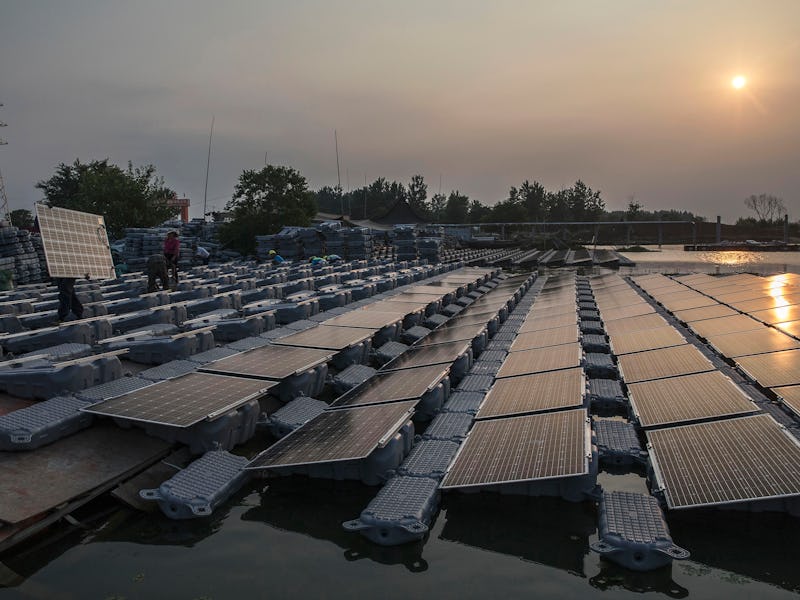Solar Panels Could Soon Come in Every Color of the Rainbow
Thanks to tiny cylinders less than a millionth of a meter.

“You can have any color, as long as it’s black.” That line from Henry Ford — admittedly a paraphrase from the slightly less pithy, more car-centric original version — was part of his strategy to make the Model T affordable to the masses, citing black’s durability and low cost.
The best solar panels also obey Ford’s rule, with their colors typically varying from black to very dark blue. These darker colors are necessary to maximize the panels’ efficiency. As it is, consumer solar panels can only absorb less than a quarter of the sun’s rays. More colorful solar panels — green, say, or yellow — take in even less energy, making such a paint job awfully expensive in the long run.
But researchers at the Dutch institute AMOLF don’t accept this status quo. After all, black might be fine for some solar roofs, but unlocking panels’ full potential means giving them the full range of colors needed to blend in with the wider environment. So the researchers created panels that can change color without sacrificing efficiency, as they explain in Applied Physics Letters.
Instead of using dyes or coatings like commercially available — and horribly inefficient — colored panels, these new panels are overlaid with dense networks of silicon cylinders, each less than a millionth of a meter wide. These cylinders use electromagnetic resonance to change the wavelength of light they scatter, which is a fancy way of saying they change color to whatever you want. The researchers first worked on green panels, and all they need do is repeat the trick for blue and red panels for it to be possible to create every other color.
The loss in efficiency is minimal compared with an unaltered panel, only about two percent. And unlike current colored panels, which will change appearance drastically depending on the angle at which you look at them, a green panel using this new method will look green no matter where you’re standing. That means these new panels would do a much better job blending into, say, a garden.
The researchers are confident their method will translate to much larger, consumer-sized solar panels. If that proves to be the case, these panels could prove essential to bringing solar energy to all new places without us ever noticing — which is pretty much exactly the point.